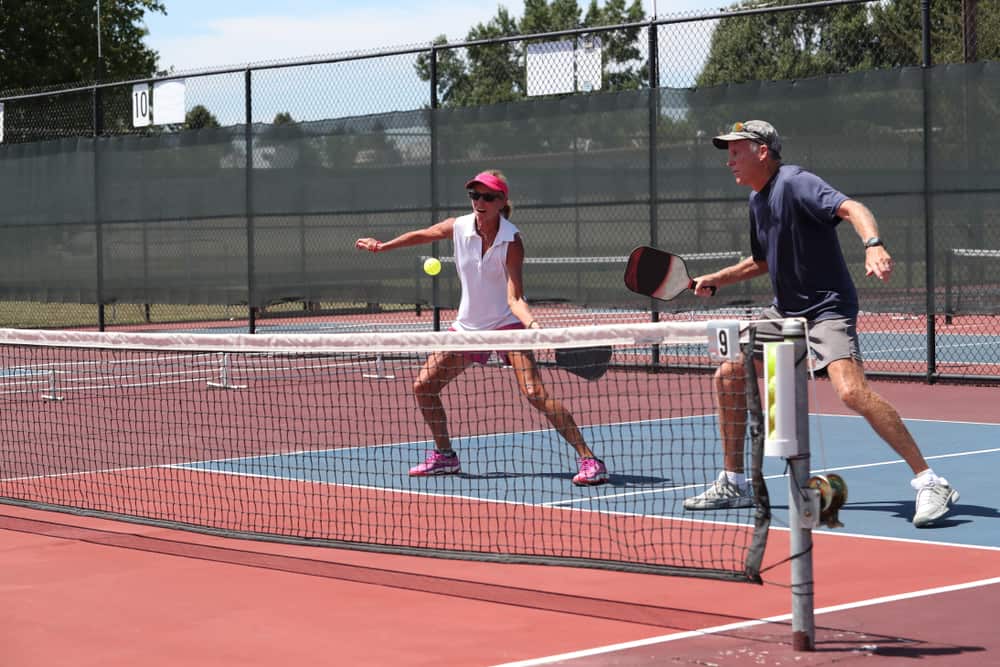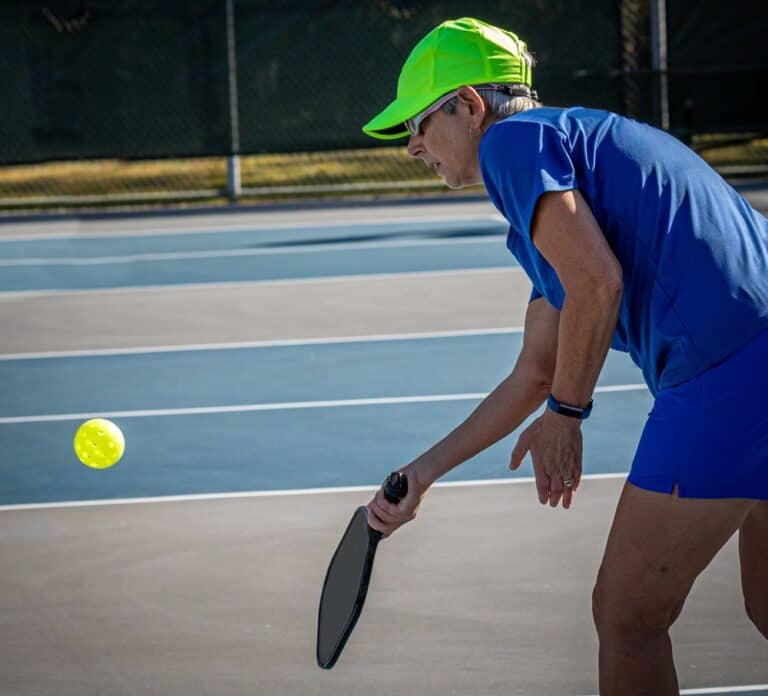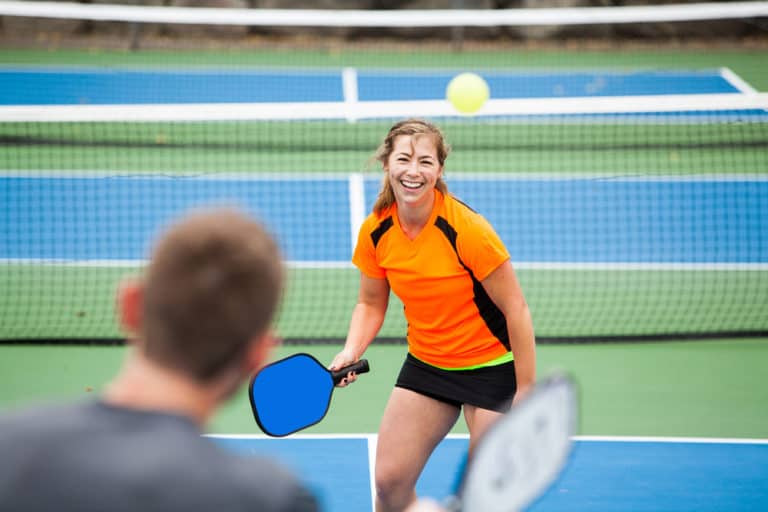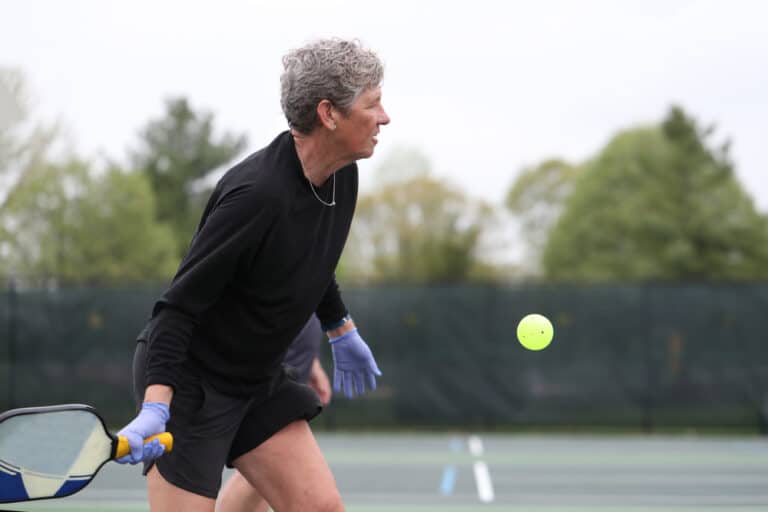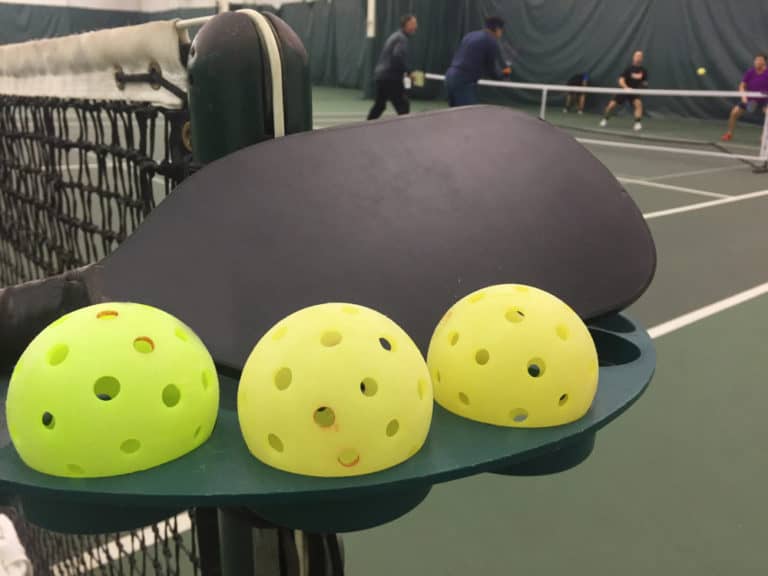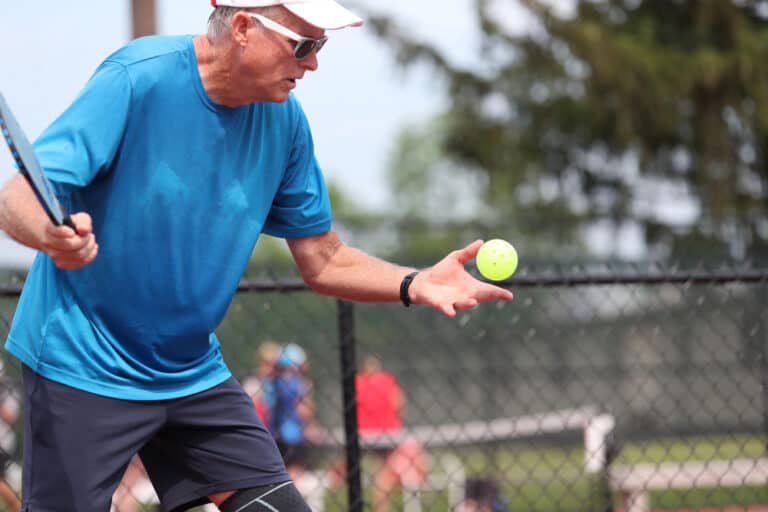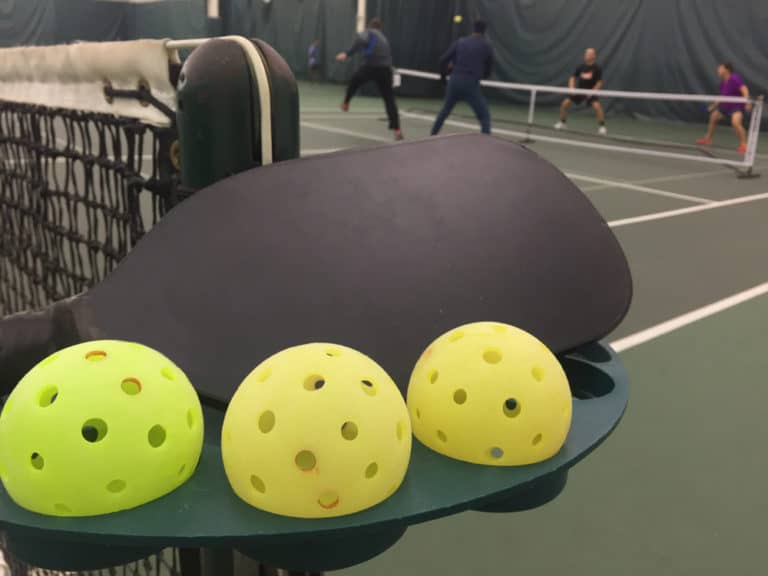What Is The Main Initial Strategy In Doubles Pickleball Play?
There is no shortage of strategies to adopt in pickleball doubles. Professionals come up with genius plays to get the upper hand. However, players at a beginner and intermediate level should first be familiar with the fundamental strategies in pickleball doubles that give them a chance to be competitive.
Pickleball doubles players should get to the Non-Volley Line (NVL) as soon as possible to maintain control pressure on the opponents. Prioritizing shot placement over power and clear and specific communication is also fundamentally important in pickleball doubles.
There is not one absolute strategy that needs to be followed in pickleball; instead, there are a few fundamental strategies that every doubles player should be familiar with before stepping on the court.
The Fundamental Strategies For Doubles Pickleball Play
Pickleball is not just a game where it is just about hitting the ball as hard as possible; as you play more and more, you start to learn which strategies work and which do not. When playing doubles in pickleball, both players should be familiar with the fundamental strategies to have a chance to win the game.
1. Get To The Non-Volley Line As Soon As You Can
Getting to the non-volley line (NVL) right after returning/serving might be the most important piece of strategy to put in effect during a doubles game. Moving forward from the get-go increases your odds of winning, giving you a chance to dictate the pace of the exchange while putting your opponents under pressure.
When your teammate and yourself return the serve, whichever of the two who is the one to receive the serve should quickly join their partner forward to the NVL and stand next to them. When serving, teammates should move toward the NVL together as soon as they can (right after they receive the returned serve).
The receiver’s partner may stand anywhere but is usually positioned at the NVZ line on their side of the court. If you or your teammate get caught in the middle section of the court, stay grounded and focus on your stance when hitting the shot. You can progressively move towards the NVL from there.
2. Focus On Shot Placement Rather Than Power
In pickleball and doubles games especially, it is better to focus on placing the ball with control instead of trying to hit a powerful winner right from the start.
Interestingly, when you take a look at the statistics, you find that the team that wins is the team that makes fewer errors. Around three-quarters of pickleball doubles exchanges are lost or won due to unforced errors, and only about a quarter are won with winners.
So, it is far better in doubles games to adopt a strategy centered on keeping the ball in play, waiting for the opponent’s mistake, or a great opportunity to strike a winner.
The following shots work very well in doubles to either give yourself the edge over your opponents or force them to make a mistake.
- Hit down the middle. One of the best places to hit the ball in doubles is right down the middle, as aiming for the middle decreases the chance you will hit the ball wide. In addition, you can create confusion for your opponents over who should hit the ball.
- Play drop shots. When well used in a doubles game, a drop shot can shift the whole dynamic of a rally. When in a difficult position, you can play a drop shot that allows you to move forward towards the NVL and (re)gain an advantage over your opponents.
- Aim for the feet. It can be very difficult to return a ball aimed at your feet, which is why aiming for your opponent’s feet is a good approach. Whether standing by the net, in the middle of the court, or by the baseline, placing the ball by their feet makes their life difficult.
- Hit towards their backhand. Generally, players tend to prefer hitting forehands over backhands, so aiming at people’s backhands can be an effective strategy to neutralize an opponent’s offense. However, some players do hit better shots with their backhand.
- Go deep with the serve. Hitting a deep serve gives you and your partner the chance to achieve one of the most important moves during a doubles exchange, getting to the NVL (and preventing your opponents from doing the same thing). So, give propriety to your serve placement rather than power.
- Go deep with the return. You should try to hit deep returns for the same reason you should hit a deep serve. Hitting a deep return gives you time to advance to the NVL and makes the serving team’s shot more difficult to return successfully.
3. Communicate With Your Pickleball Doubles Partner
Communication between partners is essential if a team wants a chance to win in pickleball doubles. A team almost always finds itself in tricky and confusing situations that end in a disaster if miscommunication occurs.
For example, an opposing team can try to confuse you by hitting shots down the middle, which works if you are unprepared. To avoid these awkward moments, you should discuss team strategy before the game starts. Generally, the person with a forehand angle claims the shot coming down the middle.
Communicate your intentions for other shots as well. Yell out “mine” or “yours,” for example, to make sure it is clear which one of you should go for the ball. Remember to yell “switch” when moving to your partner’s side of the court so they know where you are going and can stay in sync. Before the game, you can also agree on who should be the one chasing lob shots.
Finally, it is important to discuss strategy throughout the game as things progress; you can do so in between points and during timeouts.
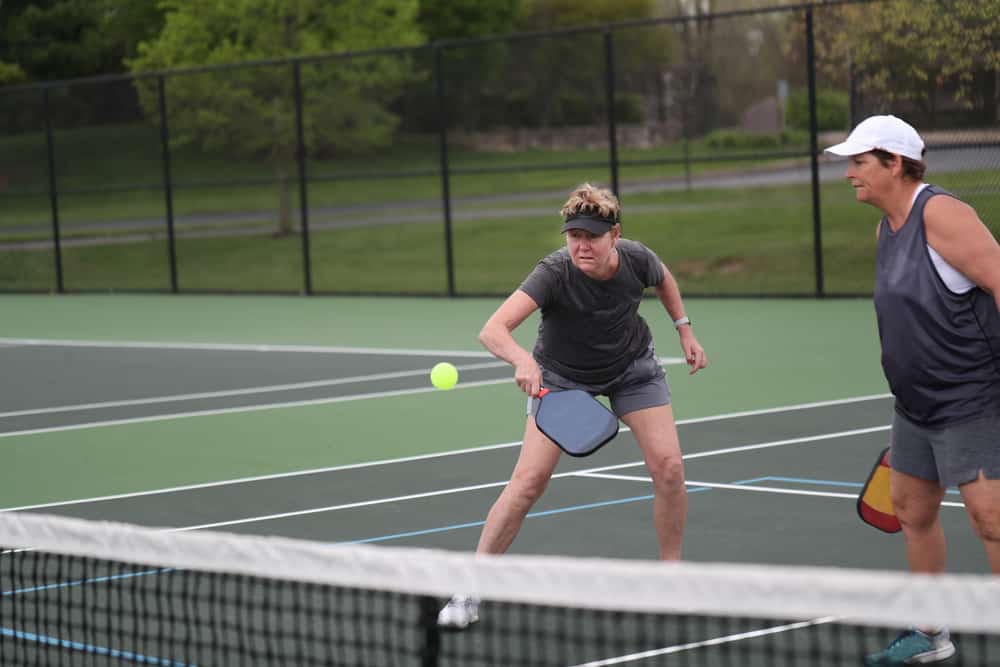
How Do You Keep Score In Pickleball Doubles
The score in pickleball doubles is called in three numbers. The numbers are called in the following sequence; the serving team score, the receiving team score, and the server number. Thus, at the beginning of the match, the score is announced as zero, zero, or two. At the start, the server number is two, so the serving team does not have an unfair advantage.
The player on the court’s right side is always the first to serve for their team. After the serving team loses a rally, the receiving becomes the service team and calls out the score in the correct sequence. The player on the court’s right side automatically becomes the team’s first server (number one).
A common error made by beginners is thinking that players have their server number throughout the match, but that is not the case.
Conclusion
A team can adopt a few main strategies in pickle doubles to become a force to be reckoned with.
Moving forward to the NVL, focusing on shot placement rather than power, and communicating with your partner all come together to form the main strategy for pickleball doubles.

